#Continuing with the parallels to 20th century history
Explore tagged Tumblr posts
Text
a large amount of time I've been spending on -untitled undefined scope original fiction project- since the last time I posted about it has been trying to develop the protagonist concept I came up with last summer or whatever into like, a character that would feel real and era appropriate.
it's fun research to do. naturally a lot of the details I assigned to her are things that I already think are cool, so it's been a lot of fun trying to trace her traits back through the relatively recent past, getting reminded of how much things have changed, or where the gaps in my intuition are, and then doing a flurry of reading to get a sense for exactly how someone like her and the people around her could have happened and what her life was probably like leading up to her present day. hopefully this results in some good good verisimilitude.
#I wrote a short story from her perspective over the holidays and then didn't know how to continue it#and then I got distracted by real life stuff for a few months#I forget if I posted about that#and then I've been picking through archive dot org for the last few weeks looking at this stuff#the last big rabbit hole was trying to get a better feel for era appropriate ts/tv subculture#the current one I'm looking at is how she would've gotten into language learning and how that would've worked#nettle has been prodding me about the setting thing lately so I've been thinking about that more too#probably the biggest hurdle by far is figuring out how I want to play that#and how I want the thing to be divided up#since the original coc scenario I'm developing this out of is centered on a flight from LA to honolulu#and the airport dungeon was definitely meant to be a hook for a larger campaign#some amount of it is going to cover protag lady's failed life in LA and some of it is going to be worse things happening in hawaii#but it's like. how much do I want to balance it one way or the other#and realistically how much does the aesthetics of 20th century air travel add to the story#besides me personally thinking it's compelling ofc#a lot of what I find compelling about hawaii is that it's an east/west cultural crossroads and realistically that's also true of socal#and I can wax poetic about socal as much as I want without worrying all that much about mishandling something#and there's also a lot of socal specific history along similar parallels to pull from that I'm more familiar with#I guess it comes down to whether curiosity re: 'doing it right' is enough of a motivator to do the increased amount of research#which I guess it has so far with the above character details. so hopefully that will continue#but it also feels like using machine translation a bit yknow. it's hard to know how effectively I'll be able to sanity check#although depending on where this goes I might be able to get other people involved to sensitivity read down the line#with most of the creative things I do I just have a tendency to always rely really heavily on figuring things out myself#I also want protag lady to have a Cool Car and idk how to get that from point a to point b narratively#this is like an entire second or third post's worth of tags but I don't feel like unfucking this so whatever. suffer. I guess.
12 notes
·
View notes
Text
The weird and wonderful history of Kowloon as a digital interactive space - Part II
This article is the continuation of a previous post.

Any comprehensive history of 20th century Hong Kong is not complete without a chapter entirely dedicated to the architectural and urban planning puzzle that was Kowloon Walled City. Quite unlike any other slum in Asia or elsewhere in the world, the extreme conditions under which its inhabitants lived captured the attention of various international journalists and photographers whose reports of this accidental labyrinth, in turn, inspired some of the most remarkable artistic explorations of our time. In this regard, video games did not remain impervious to the powerfully stimulative imagery, as much a reference today as it was when its hardened concrete walls still stood tall.
Kowloon's Gate Suzaku VR - Jetman - 2017
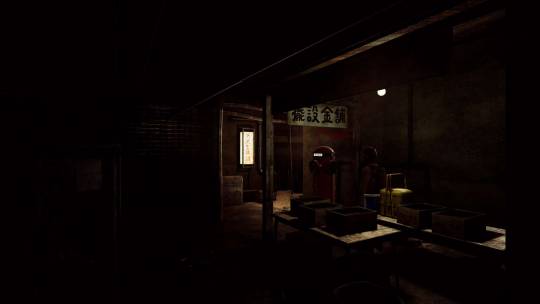
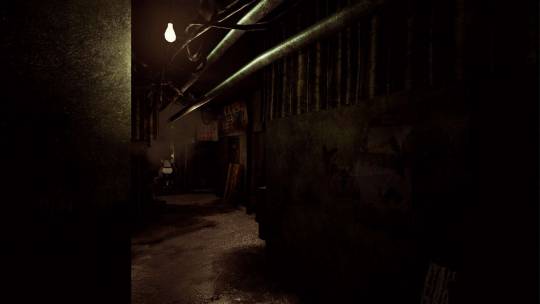
Kowloon's Gate made a most unexpected comeback twenty years after the original episode via the crowdfunded VR project Suzaku developed by Jetman, a studio founded by and composed almost exclusively of ex-SME/Zeque staff. While it is not the remaster many had hoped for, essentially consisting of a walking simulation through some redesigned locations from the original, it does a commendable job in faithfully replicating its instantly recognizable, light-starved alleyways in competent high-definition. It is also the only VR-compatible entry from this list, granting it a degree of uniqueness over its counterparts.
Stranglehold - Midway/Tiger Hill Productions - 2007
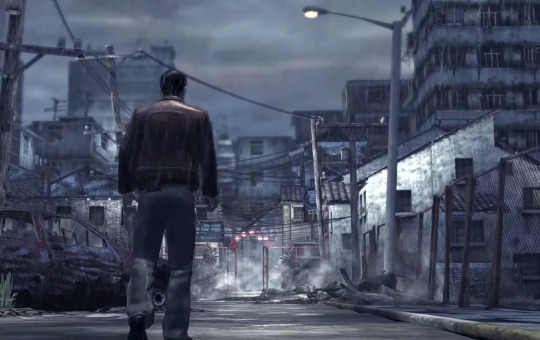
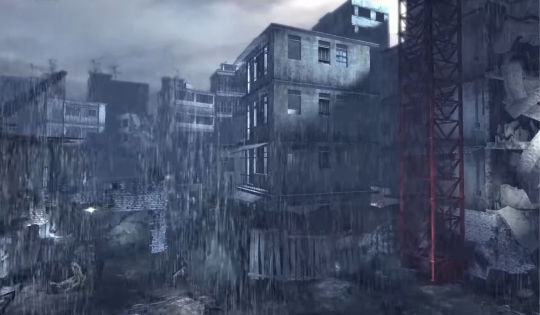
Stranglehold is the result of a collaboration with Hong Kong movie director John Woo, developed as a direct sequel to his heroic bloodshed classic Hard Boiled, featuring Chow Yun-fat in the role of detective 'Tequilla' Yuen in his unending confrontations with organized crime. One of the game's most unforgettable levels, Slums of Kowloon, takes place during a particularly rainy day, seemingly in those last days when the zone had been emptied of residents and demolition work was well underway. The visual representation of the quarter is suitably evocative, its buildings in complete state of disrepair, the remnants of local businesses or places of prayer still discernible from under the piles of steel and cement rubble.
Resident Evil 6 - Capcom - 2012
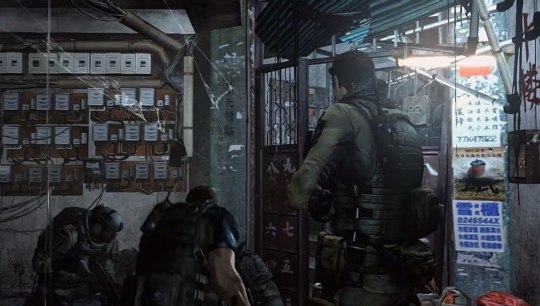
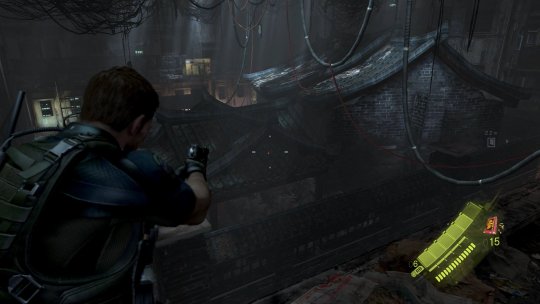
For all its shortcomings, Resident Evil 6 partly succeeds in taking the first two episodes' concept of parallel storylines and realizing it to a much fuller extent. Its choice of different characters translates into entirely different campaigns, locations and playing styles. The very first scene in Chris/Piers' campaign occurs in the fictional Chinese city of Lanshiang, modelled after real-life Hong Kong. The mayhem in the main streets forces the player to take a detour into a location named Poisawan, which bears a striking resemblance to the Kowloon district. Though an unofficial representation, it is among the most skilled replications of the scenery we find in the vast photographic repository of the area. The degree of minutiae with which the district's haphazard electric installation is replicated, alone, suffices to demonstrate a true commitment to authenticity.
Paranormal HK - Ghostpie Studio - 2020


Few would dispute that Kowloon is, itself, naturally conducive to sentiments of dread and anxiety. Paranormal HK is a 2020 made in China production reviving the defunct neighbourhood in a gripping, blood-curdling contemporary ghost story. The player is the cameraman of a paranormal-themed TV show exploring the zone during the evening of the Zhongyuan festival, a scheme suspiciously akin to that of Akira Ueda's 2004 game, Michigan: Report From Hell. As a result of the thorough research work performed by its creators, as well as the impeccable usage of contemporary 3D graphics techniques to achieve accurate lighting conditions, players may momentarily experience the feeling of walking into a photo of the actual city as it existed in the mid eighties.
Sifu - Sloclap - 2022
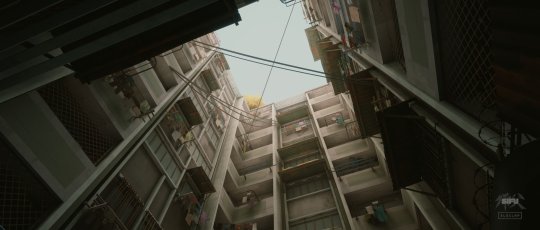
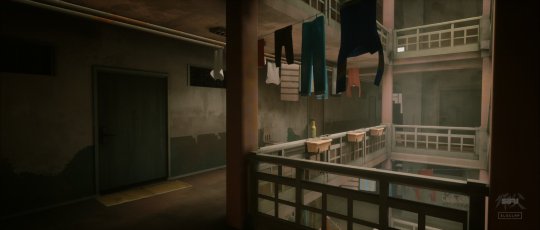

Notwithstanding of its renaissance during the 128-Bit era, the beat 'em up genre is commonly associated with the arcade games of the late 80s and 90s, the period of time when it flourished and, arguably, reached its zenith. The simplicity of controls and ease of access sufficed to attract players to the arcade cabinet, while the frequently extreme levels of difficulty of advanced levels ensured a steady flow of cash for arcade room owners and game development companies alike. Nevertheless, the genre has but perished and, in many aspects, recent years have indeed elevated it to unforeseeable degrees of complexity. Sifu, by Sloclap, synthesizes the elation of digital hand to hand combat simulation with the real-life complexity of mastering a martial art.
As is the case of previous entries in this list, Sifu makes no admitted reference to Kowloon or Hong Kong. However, the designers left little to the imagination in what pertains to their inspirations when taking on the task of constructing the game's environments. Another notable coincidence stems from the fact that this production was made possibly with the support from a celebrated independent game funding group going by the name Kowloon Nights.
Stray - BlueTwelve Studio - 2022


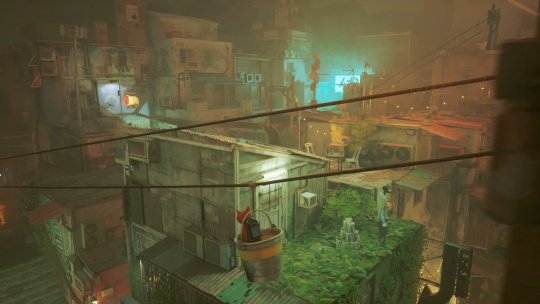
Stray is one of the most revered independent video games in recent memory, and justifiably so. The long development process yielded many benefits, judging from the consistency and attention to detail that engrossed many an avid player. That the main character is singularly charming feline may have played an equally crucial role. The creators have made no effort to conceal the fact that the notorious Hong Kong district was a pivotal influence to the design of its nameless city. The first indication can be spotted in the game's earliest footage, in which a black cat traverses a street where a particularly conspicuous sign boasted the initials HK. Stray is less concerned with presenting a precise replica of Kowloon than it is about summoning the very essence of its atmosphere. Moreover, in an exquisitely poignant way, its ending lends an entirely new meaning to the term walled city. In the future, robots may well take the place of humans. Invariably, the Walled City is no more. Slitterhead - Bokeh Game Studio - Work in Progress
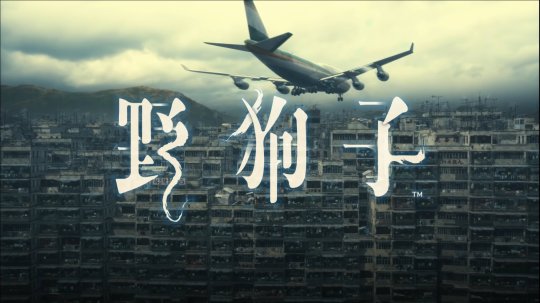

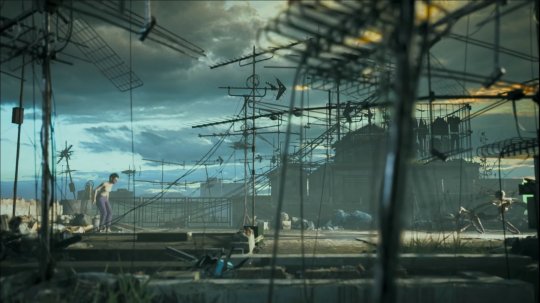
An sequence of unconscionable mistakes from the part of Sony Computer Entertainment's management galvanized Keiichiro Toyama to part ways with Japan Studio, as it once was, and establish his own game production label. Their debut title, Slitterhead, is described as a grotesque survival horror experience, a genre within which the author moves with matchless ease. Among the few certainties regarding this project is the fact that it will take place prominently - if not exclusively - within the Kowloon City province. A wide variety of aspects included in the preview footage leave the viewer optimistic as to this being one of the most accomplished portrayals of the district ever seen in a video game. Subtle yet telling signs already demonstrate the creator's in-depth knowledge of the quarter's architecture and history. Take, for instance, the suggestive image of the airplane flying mere meters above the top of the buildings. Although the growth of Kowloon was for the most part ungoverned, buildings did not rise above a certain height, even as inhabitants claimed for increased availability of space. This is due to the fact that airplanes landing at the nearby airport would be required to make their descent at relatively low altitude, performing a tight curve as they soared just above the enclave, thus preventing construction from expanding upwards. Another scene shows a child playing on the rooftops of the buildings, which once again is consistent with the documented habits of residents who, starved for sunlight and open space elsewhere within the city limits, had little alternative than to take the stairs all the way to the top.
Warehouse Kawasaki Arcade



I would be remiss not to make some form of allusion to Warehouse Kawasaki, an arcade built to replicate the Walled City with unthinkable detail. Though its ultimate purpose was for visitors to engage in digital entertainment, the venue was scrupulously put together. Point in fact, many of the objects used in the construction of the five floor amusement centre were imported directly from Hong Kong. Like so many other Japanese arcades, it closed its doors in 2019.

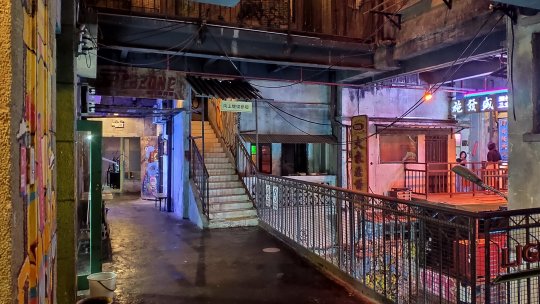
In recent years, a rather similar initiative was taken by the Chinese in their attempts to build unique mall spaces. The 文和友 malls in mainland China, found in Changsha, Guangzhou and Shenzhen, attempt to reproduce the walled city aesthetic. Local residents inform me that these are increasingly lacking in foot traffic, for which reason the majority of their stores are closed. Other digital replicas of Kowloon
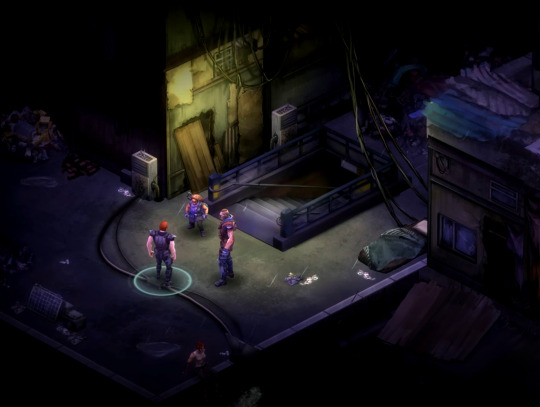
A number of other videogames set in or deriving inspiration from Kowloon could not be featured in this article. A frequently cited reference in this context is the action/adventure game Fear Effect, one which I emphatically dispute. No doubt remains as to it being located in a futuristic version of Hong Kong, yet I could discern no parallels with the walled city, save for those scattered second-hand visual motifs that were no doubt imported from sci-fi classics such as Blade Runner or Ghost in the Shell.
The Utelek Complex stage of Deus Ex: Makind Divided presents a similar situation, where the overall atmosphere of the futuristic favela bears some resemblance to Kowloon, without meeting the specificity quota that would warrant a more comprehensive exploration.
The 2004 Shout! original Kowloon High-School Chronicle for the PS2 is a unique case, in that it borrows the city's name despite taking place in a massive, Tokyo underground dungeon that is later revealed to be a maze-like Egyptian pyramid. The odd choice of title remains unclear. Shadowrun: Hong Kong game (screenshot above) contains a very direct mention of Kowloon as the place in which an entire episode comes to pass. Another project still in development, Kowloon's Curse (screenshot below), is following the lead of many popular independent horror games in recent memory by using a visual design and structure that elicits memories of the late Playstation/early Dreamcast era. A short prequel episode was made available earlier this year, for free.
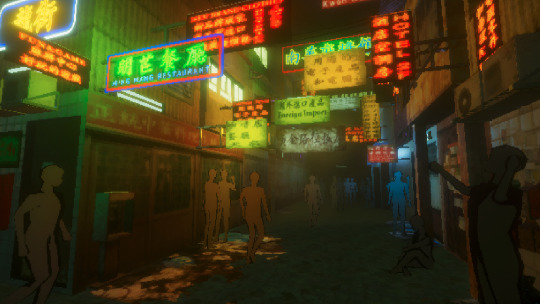
Additionally, I refrained from mentioning the Kowloon maps in Call of Duty: Black Ops or Counter-Strike: Global Offensive, as I perceive both games to be insufficiently relevant to merit study or contemplation.
A space that refuses to be forgotten
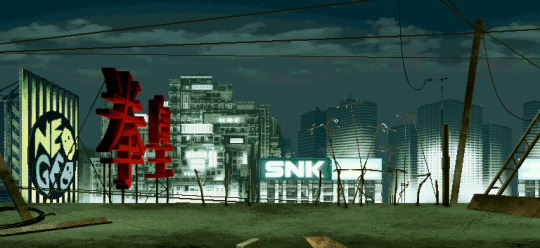
(China rooftop stage from The King of Fighters 2003)
It would be a gross overstatement to claim that Kowloon is a recurring location or level design motif in videogames. The relationship between digital games and the real life ghetto has been one of sporadic references. What makes the subject so engrossing pertains to the quality of the relationship, particularly that of a small cadre from among the titles featured in this article. Kowloon's Gate was one of the most relevant game creations of the 32-Bit era, a game deserving of reverence and cult following inside and outside Japan. Likewise, Shenmue II is the second instalment of a truly ground-breaking and highly advertised series whose production costs alone were unmatched until quite recently.
Moreover, this is an affair that is far from concluded. The unexpectedly high number of allusions to Kowloon in videogames released or revealed just last yet demonstrates that its aesthetic is still very much present in the minds and hearts of artists and designers working in the field. The walled city lives on as a digital demarcation that is certain to resurface time and again in years to come.
#kowloon's gate#kowloon's gate VR suzaku#jetman#stranglehold#john woo#kowloon walled city#hong kong#resident evil 6#poisawan#paranormal hk#ghostpie studio#sifu#kowloon nights#stray#slitterhead#bokeh game studio#keiichiro toyama#Warehouse Kawasaki#arcade#文和友
229 notes
·
View notes
Text
Today, Aug. 31, Estonians and Latvians celebrate 30 years since the departure of Russian troops from their territories, which ended half a century of occupation. The ongoing war in Ukraine is a daily reminder for Russia’s neighbors that their freedom must not be taken for granted. History suggests that Russians only withdraw from occupied territories for one of two reasons: Either they are driven out by force or their own cost-benefit calculus compels them to leave. In the latter case, the only major territorial withdrawals in Russian history have happened when regime collapse has radically changed this cost-benefit calculus. If Washington fails to recognize this long-established pattern and continues to severely constrain Kyiv’s defense in hopes for some future reset in relations with Moscow, the next wave of Russian aggression is all but ensured.
The Russian empire—whether the tsarist or Soviet variant—collapsed twice in the 20th century: in 1917, when a communist coup dethroned the tsar, and in 1991, when another, unsuccessful coup was the final death knell for the Soviet Union. Both events created a window of opportunity for many smaller nations to break free. Moscow withdrew from many of its non-Russian territories not because it no longer wanted to have an empire, but because it no longer had the means to keep these territories under its control.
Russia is currently occupying more than 42,000 square miles—about the size of South Korea—or approximately 18 percent of Ukraine’s territory. Ukrainians aim at regaining all of it and see full restoration of their territorial integrity as an essential component of a just peace. Yet their hopes to reconquer much of their land have withered, not least due to strict limitations imposed, mainly by the United States, on the Ukrainians’ use of Western weapons. Ukraine’s surprise incursion into Russia’s Kursk region and quick capture of about 500 square miles of Russian soil has changed the outlook: Now, an exchange of territories may become an element of eventual negotiations. Russian leader Vladimir Putin’s calculus is still in favor of continuing the war, but the Ukrainians are finding new ways to increase the cost to Moscow and upend the narrative that Russia is marching towards an inevitable victory.
The historical experience of Russia’s neighbors provides some clues to Ukraine’s chances to regain occupied territories or achieve peace through territorial concessions.
The last Soviet leader, Mikhail Gorbachev, decided to let the Soviet satellite states in Central and Southeast Europe go and allowed an unprecedented degree of openness within the Soviet Union. But even the great reformer Gorbachev was unwilling to give up any of the Soviet republics, including the three Baltic states. A leader of the Estonian national movement at the time, Marju Lauristin, recalled a personal conversation with Gorbachev, in which she explained Estonia’s aspirations for independence and received a straight reply. He could not give away what the Russian nation had gained, she recalled him saying.
The Baltic states grasped the chaos and aftermath of the 1991 Soviet coup to restore their independence, but that was followed by a tense three-year struggle to achieve the withdrawal of Russian troops. Diplomatic efforts took place in parallel with the departure of Moscow’s forces from the former satellite states, including more than 330,000 soldiers leaving East Germany by 1994. As we know, Russia’s withdrawal from Germany was a most humiliating experience for the young Putin, who was traumatized by the East Germans’ peaceful uprising against their communist regime while he was stationed there as a KGB agent.
Estonia was the last European country to secure the departure of Russian troops through a July 1994 agreement between the two countries’ presidents at the time, Boris Yeltsin and Lennart Meri. Both leaders took considerable risks by agreeing to a deal that was unpopular in their respective countries. Many in the Russian opposition, diplomatic establishment, and security services were highly critical of Yeltsin’s decision. On the Estonian side, the deal involved painful concessions, notably allowing retired Soviet military personnel and their families, altogether more than 10,000 people, to stay in Estonia and enjoy social benefits. Similar unpopular conditions were also accepted by Latvia. Although the departure of occupying troops was a dream come true for Estonians, Meri faced criticism at home for the concessions. It took great diplomatic skills and political courage to achieve the final stage of de-occupation, which paved the way for Estonia’s accession to NATO and the European Union.
The motive for Yeltsin was most probably his wish to maintain good relations with the West—especially the economic and financial support on which Russia depended at the time—while the United States and Germany put friendly pressure on him to withdraw his forces from the Baltic states. Any such motive is utterly irrelevant for the current Russian leadership; there is no chance that Western countries could persuade the Putin regime to deliberately leave Ukraine in hopes of improved relations or economic benefits such as sanctions relief.
For some of Russia’s neighbors, giving up territory was the price to pay for independence. However, territorial concessions without being prepared to resist further Russian demands has not been a recipe for stability. In 1939, then-independent Estonia gave in to Soviet demands to establish military bases on its territory in the vain hope of avoiding war. The concessions did not help, and the Baltics were soon occupied and annexed. Finland refused similar demands for the stationing of Soviet troops and was attacked by the Red Army. Yet eventually, Finland sustained its independence after fiercely fighting for it. The Baltics learned a bitter lesson. Today they are prepared to fight back from the first moment of aggression.
Finland gave up one-tenth of its territory as a result of its two wars with the Soviet Union, but it would be wrong to present this as an example of trading land for peace. The Soviet Union did not stop fighting because it was content with the concessions; it stopped because it was unable to defeat the Finns and conquer more land. The Red Army became too exhausted to carry on, not least because it was also fighting on other fronts of World War II.
As part of the armistice agreement that ended the Soviet-Finnish fighting in September 1944, Finland leased to the Soviet Union the strategically valuable Porkkala peninsula, located just 20 miles from Helsinki. Although the lease was set for 50 years, the Soviets returned Porkkala in 1956, which looks like a rare example of a voluntary Russian withdrawal. The decision was part of the thaw under Soviet leader Nikita Khrushchev, who succeeded Joseph Stalin in 1953. The case shows that a new leader who is critical of his predecessor may sometimes be favorable to new openings.
However, in subsequent years the Kremlin continued attempts to subsume Finland under tighter Soviet control, successfully interfering in its domestic politics and forcing it to align much of its foreign policy with Russia’s but failing to push the country closer to defense cooperation. Finland achieved Soviet recognition of its neutral status only as part of the Conference on Security and Cooperation in Europe held in Helsinki in 1975.
Another Russian neighbor, Japan, has also learned that Moscow does not give up territories under its control as a gesture of goodwill. Under former Prime Minister Shinzo Abe, Japan made extensive efforts in the 2000s and 2010s to foster friendly and mutually beneficial relations with Putin’s regime. Abe aimed to finally settle the two countries’ territorial dispute over the four southernmost Kuril Islands, annexed by the Soviet Union at the end of World War II. In the hope of splitting the difference and regaining two of the islands, Japan went to great lengths in courting Putin and avoiding any criticism of Russia, including after Russia’s illegal annexation of Crimea and the start of the war in eastern Ukraine. In March 2022, Russia announced that it did not intend to continue the talks and practically ruled out giving up any of its territories, with Russian Security Council Deputy Chairman Dmitry Medvedev stating that “negotiations about the Kurils always had a ritualistic character”.
So far, the West has been surprised by Russia’s ability to bear the heavy cost for its invasion of Ukraine. In Western societies, human life is priceless; in Russia, it is cheap. The Russian regime has been able to rely on seemingly endless waves of expendable soldiers and a harsh redirection of its economy to defense production in ways that would be far too costly for any democratic leader. What can be fatal for a Russian leader, however, is any perceived weakness and the failure to uphold Russia’s greatness. Most Russians want to live in a great country that dominates others, and they are ready to accept sacrifices for this cause, as documented in detail in books by Svetlana Alexievich, Jade McGlynn, and others.
Western leaders have talked a lot about the need to raise the cost of Russian aggression. But they have failed to effectively implement economic sanctions and have still not allowed Ukraine to use Western long-range weapons to attack military targets on Russian territory. By bringing the war to Russia nonetheless, Ukraine has proven that there is space to be bolder and more innovative in making the Russians pay a painful price for their desired greatness—a greatness that is built on invading and occupying other nations.
Russia is not going to withdraw from Ukraine unless it is forced to go—or to pay an unbearable price to stay. There is absolutely nothing in Russian history or recent behavior that suggests Moscow could be expected to negotiate in good faith to reach a compromise. Some territorial concessions from Ukraine may eventually be the price worth paying for peace and freedom—but this remains moot until Russia first gets to the point where it believes that further aggression can bring no gains.
Full restoration of Ukraine’s territorial integrity will likely require another collapse of the Russian empire. It may be years ahead, but Russia’s historical trajectory suggests that it will happen at some point, as the country has shown itself to be incapable of correcting course through evolution rather than revolution. A Western “reset” with the current regime will not be possible without sacrificing Ukraine’s independence and the core principles of the European security order, including the principles of sovereignty and territorial integrity.
Whether losing Ukraine will be the final death toll for the Russian empire, only time will tell. And even then, Russia’s neighbors will always have to be prepared for its violent imperialism to rebound.
37 notes
·
View notes
Text
Outlander: Ye Dinna Get Used to It (7x14)
Is it my birthday?? John Grey-centric episode, Hal, PERSEVERANCE WAINWRIGHT?? Ahhhhh.
Cons:
Okay, like, obviously there is a ton about this show where you just kind of have to hold your nose and pretend this is like, a parallel fantasy reality that's not our own, but I have to say: the dinner scene with General Washington was just so icky to me. Everyone's getting all reverent and patriotic and Washington is painted very much in his mythic "father of our country" sort of vibe. And the whole time it's just like... yeah, future President George Washington, who also owned human beings as chattel? And Claire is not shown to have any sort of thoughts or feelings about this whatsoever. The show has always been so awkward about this, not wanting to look at it head-on. Like the Jocasta stuff at River Run always bothered me too, because Claire reacts to it more like it's casual bigotry that she's having to grin and bear for the sake of social politeness, and not literally, you know, the institution of slavery. I'm not saying Claire should throw a drink in George's face, that wouldn't be very strategic of her, for one thing. But I do wish the show didn't have her be quite so giddy and honored to be in his presence and receiving a Betsy Ross flag as a gift from him. It's yucky.
Small detail, but when William gets chastised for his uniform being in disarray, and is literally told "you look like a groom from my estate," it's like... oookay. A little too on the nose. Couldn't he have said "you look like one of those slovenly continental traitors" or something else that's also true about Jamie but that isn't so oddly specific? It was too silly.
Pros:
We don't get a ton of motion on the 20th century plot this week, but Brianna does find Rob Cameron with some accomplices hanging around her house, and by the end of the episode she's come to an important decision regarding her future: maybe it's time her and the kids go to Roger. Dun dun dun! More on that in the coming weeks, one assumes.
I loved the Ian and Rachel scene in this episode, I continue to be surprised by how much I've been converted to them as a couple. It's so cute to see them being all giggly and newlywed, and Rachel helping Ian with his war paint is something that can be so personal (and sexy) actually.
I really love the casting for Jane, too, and the way she puts William back on his heel. The scene where she explains how she doesn't know how money works is a good way to open William's eyes, and ours, about the true depth of the gulf between them in terms of not only social standing but also life experience. She's lived a life that most high born ladies would find horrifying, but she's also had this very sheltered, very small world she's never had to poke her head outside of. We learn that in order to protect her sister Fanny, Jane killed the dickhead who was hoping to take her virginity for a high price. They are now under William's protection, which is... complicated. William's got a lot going on in his life right now, not the least of which is Richardson sending him off on another quest, that we learn from a certain Monsieur Beauchamp is a trap. I continue to be really impressed with the William actor for portraying this simmering rage and despair alongside a good, stalwart heart.
While I was cringing at the canonization of George Washington as a mythic figure of good, I do still get a major kick out of Claire bumping into history while out and about in town. The stuff with Lafayette (or should I say Gilbert?) was incredibly charming. I love that Claire really loves to be flirted with? It's this thing about her that Jamie ordinarily doesn't really mind either, this courtly type of good manners paid to her by gentlemen who would never dare cross a real line about it. It was so cute, the whole bit where he offers to let her use his first name, and then gives her the cheese as an apology for bumping into her in the street. I love him.
As always I've saved my bestie John for last in this review - this was a proper John-centric episode in every way, we start the episode with a flashback to John and Hal, we end the episode with John and Percy, and we get a ton of juicy stuff in between. I was in heaven. I don't know if David Berry has ever looked more handsome to me than he did in this episode, I don't know what it is - not the gross eye or the eye patch, but like, I think the wig looks good and his constant expression of injured affront is just so tasty to me. So many little book details made it in here, like John calling Claire "my dear" when they run into each other (although I wish it had been in Jamie's hearing lol), and Claire asking Jamie to hold John still while she works on his eye. Just like... the amount of history and hurt feelings in that room as Jamie clamps onto John's shoulders, wincing in seeming horror at the sound of him in acute pain while Claire yoinks his eyeball around in his skull... there are entire essays one could write in honor of this whole situation.
I think one of the reasons this plot thread is among my favorites in the book is how... intimate and personal the anger between these people is, like, the depth of feeling between them is the reason for the break being so extreme now. John isn't an acquaintance, John isn't the father of Jamie's son by happenstance, these people care about each other, and they're entangled with each other because of that care, and that's what makes the conflict between them so rich and devastating. I really loved the bit where Jamie's like "well, I should turn him into Washington, but then he might be hanged" and then abruptly speaks to John directly for the first time like "what the devil were you thinking?!?!" Because it's like, "I'm so mad at you right now I can barely look at you and now you've put me in the position of having to protect you from being killed because obviously you're family and I can't let you die even though I kind of still want to punch you in the face again..." and then he's distressed by John's pain but not necessarily sorry for having hit him... chef's kiss.
Claire and John having this post-marriage softness in their dynamic is something I've always really loved too. After what they went through together, they're solid for life, they'll always have this deep affection and respect for each other. And you see it in the way Claire touches his shoulder, and says she's sorry to John, and offers her support to him before leaving him alone with Percy at the end, there.
And let's talk about Percy. "For your beautiful eyes" like, sir, this is a Wendy's. The minute this guy's name came up at the dinner party I made a sound like a tea kettle going off. I'm so hyped to have John's most intense reciprocal love on our screens at last. They have, shall we say, a contentious backstory, and I'm delighted to see him here and to have this juicy opening scene between the two men, because it speaks to the possibility of getting even more John-related content moving forward as we dig into the deal between these two men. Also continuing to make me feel insane about the Jamie of it all, when Percy tenderly touches John's face and asks "who did this to you?" John's response is to say "a man who has a right to touch me." Which is just!!! Big yikes! I love!!!
I don't think the words "our son" ever cross Jamie's lips in the books when he's talking to John directly about William. I may be wrong, but in any case I deeply loved it when it happened here. John tells Jamie that William is in danger, and the solution to this problem is for Jamie to set John, his prisoner, free, and send him off after William. That moment, where John makes a quip about getting used to being in chains, and Jamie says "ye dinna get used to it," is so rich with the history of these characters. The first time they met, Jamie overpowered him easily. The second time they met, Jamie was John's prisoner, and it stayed that way for a very long time. Now, John is under Jamie's power, and both of them resent the situation, but Jamie might resent it more than John does. That "our son" moment was a touch of apology and forgiveness, but mostly it was a setting aside of everything else: no matter how much anger exists between them at any given moment, they can be united in wanting to protect William.
So yeah. I'm a happy camper once again. All you gotta do is put John Grey on my screen and I'm ready to be delighted!
9/10
14 notes
·
View notes
Text

Dianaworld by Edward White
A deeply-researched account of the public fascination with Diana Spencer takes in royalists, republicans, lookalikes and sex workers
Athriving industry of books, TV shows and films has kept Diana, Princess of Wales’s image alive since her death in 1997. Most focus on her flawed inner world, and claim to uncover her “true” self. Edward White’s lively, deeply researched Dianaworld gives us something very different.
White, whose previous work includes an acclaimed biography of Alfred Hitchcock, approaches Diana’s story through the people who saw themselves in her – the doppelgangers, opportunists and superfans who found parallels between the princess’s life of extraordinary privilege and their own. His subjects are the frequently ridiculed devotees who fuel celebrity culture: women rushing for the Diana hairdo; impersonators opening supermarkets; psychics jolted awake the night of the fatal crash. It is, White says, “less a biography of Diana, more the story of a cultural obsession”.
He marshals an impressive range of sources – diaries, oral histories, teenage scrapbooks, adverts and comedy skits. There is the woman who, eight months pregnant and living in a homeless hostel, feels a deep bond with the princess also expecting her first child; the sex worker who sees in Diana’s rejection of royal pomp her own disdain for British hypocrisy; the owner of an Ealing boutique specialising in Shalwar Kameez who, after Diana wears one on a trip to India, encourages her customers to “look like a princess”. There are nationalists and internationalists, royalists and republicans, conservatives and progressives, those who pitied, admired, were beguiled or infuriated by Diana. In their stories it is very hard to see where Diana ends and the rest of us begin.
Such intense connections to celebrities are easily dismissed as “parasocial relationships”, one-sided, delusional versions of love. But the strength of White’s approach is his desire to take seriously the stories that drew people to Diana and continue to shape her afterlives. There is no single explanation for her enduring appeal – and in fact, any attempt to provide one will seem foolish after White’s book. Instead, he traces what sociologist Arlie Russell Hochschild calls the “deep stories” that power our gut reactions.
Some of White’s subjects connected with Diana through narratives of the “doomed family”, seeing their own generational histories of trauma in hers. Others, particularly immigrants and gay people, recognised her as a kind of outsider. White demonstrates how some of the most radical images in Diana’s life derived their power from older tropes. Photos of her shaking hands with HIV-positive men certainly challenged the stigma and misinformation surrounding the disease. But they also summoned more ancient ideas: the laying on of royal hands and the religious concept of the “healing touch”. As White’s subjects try to explain why Diana mattered to them, they often find themselves inside these deep stories, repurposing them for the modern age. As White astutely puts it: “Blair once told an interviewer that Diana invented a ‘new way to be British’. It might be more accurate to say that through Diana, the British invented a new way of fantasising about themselves.”
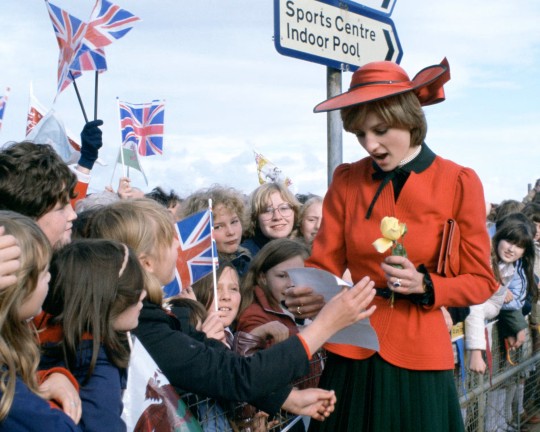
Above all, what Diana offered was a new way for British people to imagine the place of emotion in public life. Again and again, White’s subjects tell us that what drew them to Diana was her messy but apparently authentic expression of emotion, the way she challenged British reserve. The historian Thomas Dixon argues that the stiff upper lip was only a brief, 20th-century anomaly in the emotional history of Britain, where sobbing in the streets has been far more common than not. Yet, by the 1980s and 90s, Britain seems to have felt like a place where a reservoir of long-repressed sentiment was ready to overflow.
Right from the start, people were fascinated by Diana’s feelings. First it was her tears, her blushes, her bitten fingernails, her self-conscious head tilt. Later, it was her weight loss, reckless outbursts, and her penchant for what Julie Burchill called “damp, self-dramatising American therapy-speak”. Finally came the endless cruel speculation about her mental state and accusations of borderline personality disorder and paranoia. Her seemingly excessive or apparently unwanted emotions resonated with people struggling to express their own in a world only too eager for them to quietly conform. Though, as White observes, Diana’s pain was also an essential tool in neutralising potential resentment towards her gilded life: “Poor Di, so human, so lovable,” as one man put it.
As have others before him, White sees this emotionality as a watershed moment, when Britain was forced to reckon with the new self-actualisation culture that had been gathering momentum for some time on the other side of the Atlantic. “Arguably of greater social significance than her embrace of any specific cause – homelessness, domestic abuse, addiction, mental illness, Aids – was the emotional tenor in which she approached them,” writes White. As bouquets mounted up outside Kensington palace after Diana’s death, some grieved, while others found the public spectacle coercive, seeing it as synthetic as the plastic wrapping on all those flowers. Today, with far more terrifying spectacles of public emotion to contend with, worrying about the authenticity of mass grief seems quaint.
This book is an ingenious solution to the problem of biography in an age of global celebrity, where identity seems much less stable, a jumble of ever-changing projections and imaginings. It is hard to know what White himself makes of the continuing obsession with his subject. Dianaworld is a kaleidoscopic place, stuffed full with contradictory perspectives. But perhaps that is appropriate for a life that ultimately seemed so mercurial and slippery, so un-pin-down-able. As one visitor to Althorp comments at the end of a rather lacklustre tour of Diana’s childhood home, “Is there nothing else Diana? Is that it?”
Daily inspiration. Discover more photos at Just for Books…?
4 notes
·
View notes
Text
The History of Driving Tests: How They've Evolved Over Time

The driving test has become a rite of passage for millions worldwide, symbolizing both freedom and responsibility. But this was not always the case. The history of driving tests reveals how our views on road safety, training, and licensing have changed dramatically over the past century.
1. Early Days: Driving Without Testing When cars first appeared in the When cars first appeared in the late 1800s and early 1900s, there were no formal tests or licenses required. Driving was a novelty, and most roads were shared with horse-drawn carriages. As the number of cars grew—and so did accidents—governments realized regulation was needed.
2. The First Official Driving Test The world The world's first mandatory driving test was introduced in France in 1893. Germany followed in 1903, requiring drivers to demonstrate mechanical knowledge and basic driving skills. In North America, Massachusetts and Missouri were the first US states to require licenses (in 1903), but without a driving test.
3. Testing Becomes Widespread It wasn't until the 1930s that driving tests became standardized in many places. In the UK, the first compulsory driving test was introduced in 1935. Canada began implementing mandatory tests around the same time, as traffic volumes increased and road safety became a national concern.
4. How the Test Evolved Over Time Early tests focused on basic skills like steering, starting, and stopping. Over time, they evolved to include parallel parking, merging, understanding signage, and eventually hazard perception. Written theory tests were introduced to ensure drivers understood traffic laws—not just vehicle operation.
5. Introduction of Graduated Licensing Systems By the late 20th century, many regions introduced a graduated licensing system. This includes stages like learner's permits, intermediate licenses, and full privileges. These changes aimed to reduce crashes among new drivers by introducing experience-based progression.
6. The Role of Technology in Modern Testing Today's driving tests often include computerized theory exams, simulators, and dashcams to record on-road performance. Some jurisdictions even allow booking and tracking progress online. These technologies help standardize testing and reduce human bias.
7. A Continued Focus on Safety and Skill While the format and requirements of driving tests continue to evolve, their purpose remains the same: ensuring that new drivers possess the knowledge, judgment, and physical skills to navigate modern roadways safely and responsibly.
Understanding the history behind the driving test helps us appreciate how far we've come—and why it's so important to keep improving. For resources and support in preparing for your own test, visit licenseprep.ca .
Tags: #DrivingTestHistory #GraduatedLicensing #RoadSafety #DriverEducation #LicensePrep #licenseprep
3 notes
·
View notes
Note
Talking about prequel ideas, I was rewatching the episode with Henry Winchester where he talks about his father's father being a Man of Letters, which puts him about the turn of the 20th century. With the Campbell's history of coming over with the Mayflower, they could have a Winchester MOL partnering with a Campbell hunter in the early 1900's, almost like a parallel of Sam and Dean. You could have the series end with a falling out, or maybe they lose track of each other during the war, something that could bring the two families together and tie in to Sam and Dean without breaking SPN's continuity. What do you think?
(I'm sure there are a ton of ideas out there, and pretty much all of them would have been better than AU John and Mary.)
I seriously like your idea! Maybe because while I don't necessarily think about the Roman Empire every week (more like every other week), I do give a lot of thought to AU history filled with historical figures armed with steampunk-like weaponry against aliens, monsters, and demons. It's one of the reasons why I liked Abraham Lincoln, Vampire Hunter so much.
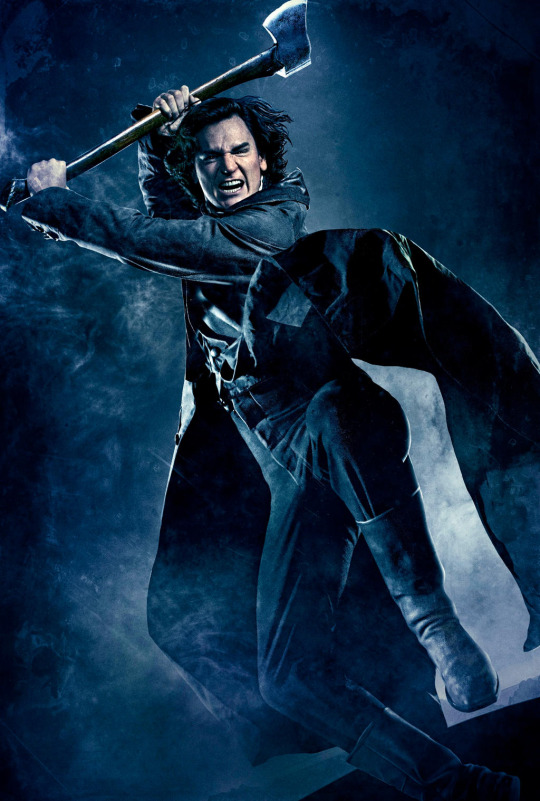
I always thought one of the missed prequel idea was centering on Samuel Colt and his posse fighting monsters and ghosts in the Old West. You know the writers of Independence would have written an awesome Supernatural spinoff.
45 notes
·
View notes
Text
I'm on a fucking roll fr fr
I made an OC Introduction 🤠
꒰⑅ᵕ༚ᵕ꒱˖♡~~~~~~~~~~~~(´ε` )
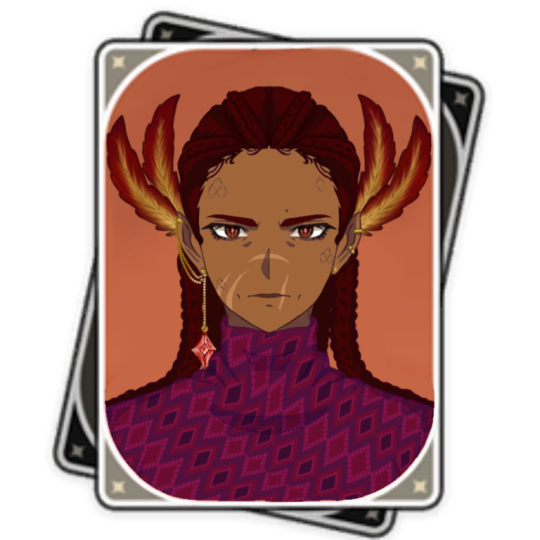
Name: Eztli Dzata
Birthday: March 20th
Affiliation: Seven Sovereigns
Gender: Male
Rarity: 5*
Weapon: Claymore
Ancient Dragon's Authority: Pyro
Constellation: Flammeum Anguis
An old dragon that was found in the deepest chamber of the Great Volcano of Tollan Was found to be greatly weakened from the centuries of isolation. The Pyro Archon Requested him to transform into a human
Signature weapon
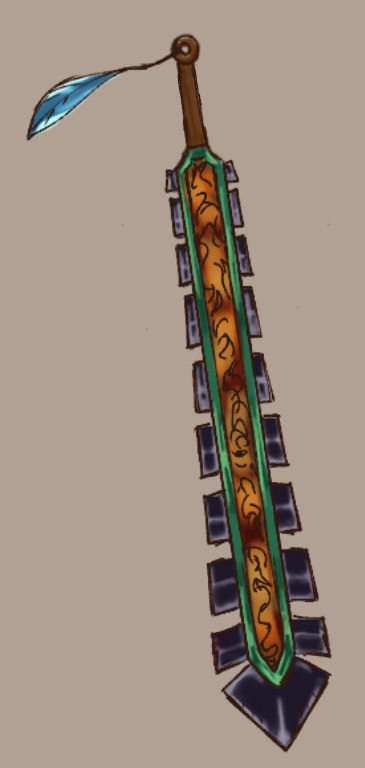
Flamelord's everlasting ember
Claymore
Crit Damage
66.2
Base ATK
608
Blazing embrace
Increases Crit Rate against opponents affected by Pyro by 80%. Opponents affected by Pyro are instead dealt DMG equal to 200% of ATK. Can only occur once every 10s
Name card
Storge of a dragon
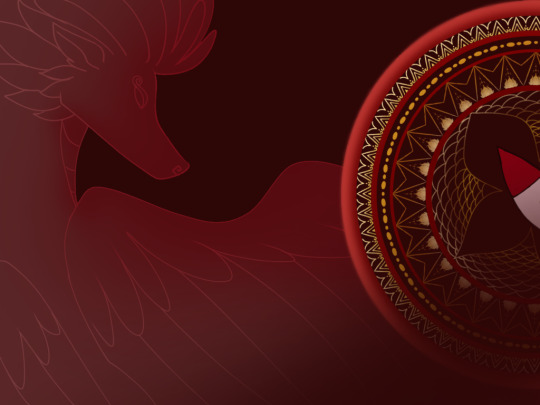
"...For a protector's job may never end, their will and love be as undying as their soul will forevermore be..."
Constellation
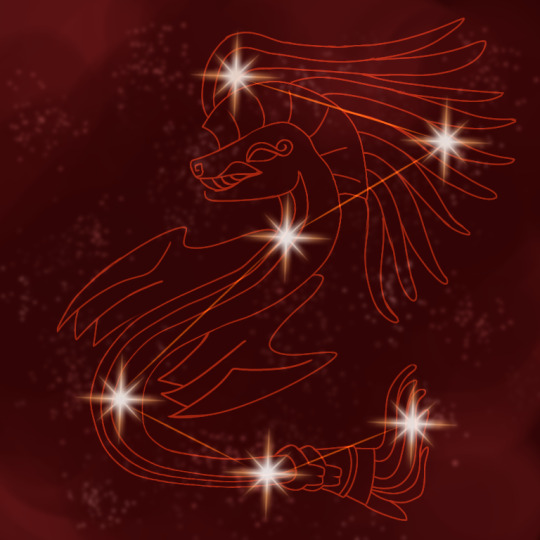
Partner:
Neuvillette
Eztli adores the Chief Justice and would drop everything if the man ever receives a letter requesting his presence (Which of course is rare for Neuvillette to open up even to his partner, he is used to relying on himself, so Eztli checks up on him every week, bringing him flowers or other gifts)

(Little Eztli on his way to his beloved)
Fun Facts:
Has a great soft spot for children
Holds the Archons in high regard... except for the Geo Archon, refuses to elaborate further whenever asked
In his Night soul state, he will discard his cloak, his markings will light up and the markings on his face will appear
Adores sweets, though refuses to admit it
The crown of feathers behind his ears are actually part of him, if ever touched or even pulled, he will become absolutely offended for an indefinite amount of time.
Is capable of engulfing his claymore and extremities in fire, will only last for 1 minute
(10 seconds in game lol)
Drip marketing!
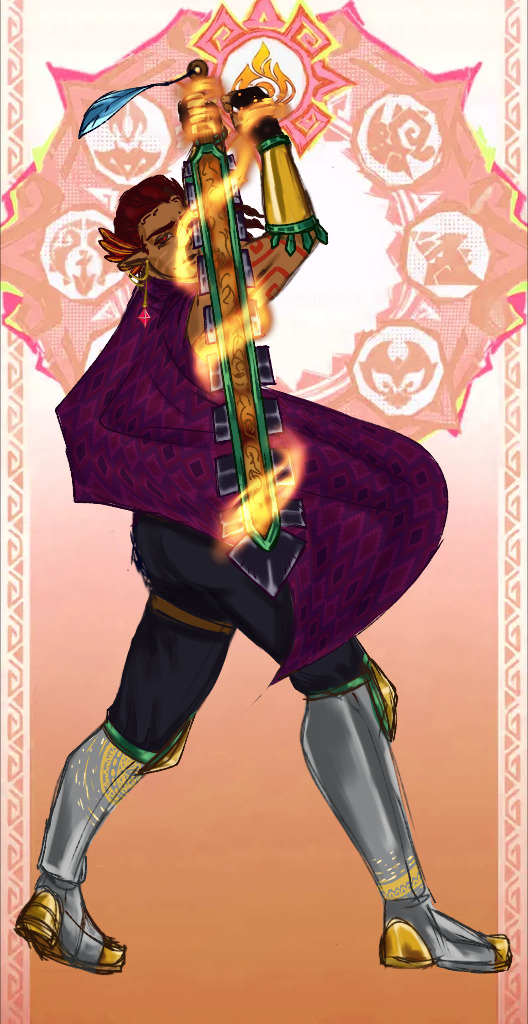
~~~~~~~~
References
Tépactl, blade used for ritualistic sacrifices to venerate the gods in Mexica tribes. It is also associated in the Aztec calendar the day March 20, which is coincidentally the first day of spring

Macuahitl, a weapon mostly associated with the Jaguar warriors, preceded the Mexica. Tools made of obsidian fragments were used by some of the earliest Mesoamerican groups. It was a club-like weapon made of wood with edges inlaid with obsidian, a volcanic glass, on each side.
(I used mostly number 2 as reference)
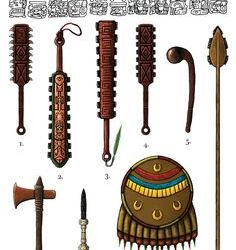
Quetzalcóatl, also well known as the Feathered Serpent, yes, I know Genshit used Xiuhcōātl or also called the Turquoise Serpent. I decided to draw sort of a parallel, Eztli is not Xiuhcoatl (Genshit's), but he is a reincarnation, just how Neuvillette is a reincarnation to the og Hydro dragon
~~~~~~~~~~~~~~~~~~~~~~~
Rambling time
I used WAY more references but these were the most... important ig, also, yes I am Mexican but I am not that connected to my history, I really mostly created Eztli to nudge myself to learn more about my culture. And honestly, most of Natlan gave me a weird vibe, its... too modern...? not that I expected them to be in tribal clothing ofc, it's just weird to see the women with crop tops and FUCKING ORORON WITH JEANS
It's just personal preference tho, I did make Eztli sort of more leaning on post conquista with the pants and metal armor... but also mixed more ancient armor, I hope I did a sort of good job and I'm open to advice!
...
Also... I'm kinda conflicted with the game, I love it, it's fun for me, but with all that's happening it's just... I don't even know how to write it! I want to separate it from everything that's happening, but it's just so jarring, and I enjoy the characters but their designs make me feel weird, maybe its the fact that I have a positive view of the game since I started playing for someone I love and only continued because I got so attached to it, and I cannot pick up another game and I don't know why
I don't think I like Natlan as much as I hoped, but whatever that's enough whining from me, I think I'll continue until I get the characters I want and ditch the game
Maybe I'll continue making art of Neuvillette and Eztli, and maybe other characters they're genuinely so enjoyable for me
5 notes
·
View notes
Text

Karl Lagerfeld’s legendary library in his Parisian atelier was a reflection of his insatiable intellectual curiosity and deep appreciation for literature, art, and design. Located in the heart of Paris, this vast collection of books was more than just a personal archive—it was an extension of his creative process. Lagerfeld, known for his razor-sharp wit and encyclopedic knowledge, often credited reading as a fundamental part of his inspiration. His library housed thousands of books, stacked floor to ceiling in an organized yet seemingly chaotic manner, with topics ranging from fashion history and photography to philosophy and architecture.
By the late 20th and early 21st centuries, Lagerfeld had cemented his status as a design visionary, revitalizing Chanel and Fendi while maintaining his eponymous brand. His workspace was an environment of constant creativity, where books served as both a source of reference and an aesthetic statement. He once famously said, “Books are a hard-bound drug with no danger of an overdose.” His Parisian home, filled with rare editions and beautifully bound volumes, reflected a mind that never stopped absorbing and reinventing. Despite the rise of digital technology, Lagerfeld remained devoted to physical books, believing in their irreplaceable charm and tangible connection to knowledge.
Even after his passing in 2019, Karl Lagerfeld’s library remains an enduring symbol of his brilliance. It represents not just a collection of books, but a window into the mind of one of the most prolific designers of the modern era. His passion for literature paralleled his passion for fashion—both built on history, reinvention, and a relentless pursuit of beauty. Today, his library continues to inspire designers, artists, and admirers worldwide, preserving the essence of a man who lived as much for ideas as for aesthetics.
2 notes
·
View notes
Text
Some of My Fav WOC Jazz Artists!
As it is officially the last day of Women's History Month, I thought it would be fitting to close it off by giving some of my favorite (and arguably underrated) WOC jazz artists some very well-deserved recognition!
Una Mae Carlisle (born December 26, 1915 – passed November 7, 1956) -

A truly talented jazz pianist, composer, and vocalist that specialized primarily in swing and crooner styles. With her voice highly resonant, leaving behind a lingering sweetness, and careful attention to detail in her piano-playing, Una Mae was not only one of the first WOC jazz composers to have her work end up on billboard charts, but her achievements are parallel to/went beyond the bounds of those other more conscientiously documented jazz performers in the early 20th century.
Discovered by Fats Waller at the young age of 17, Una Mae Carlisle had an early start in the entertainment industry with her true roots being in the little state of Ohio. Despite her early compositions and playing styles being heavily inspired by Waller, starting in the mid-late 1930s and continuing until her passing, Una Mae would go on to have her own solo career outside of touring and recording with him. In turn, she traveled across the states and even made her way throughout Europe and the UK (though eventually returning to the states and settling down in Harlem, New York).
Her achievements spanned from things such as her compositions becoming hits that proceeded to be performed and recorded by other highly-regarded jazz artists such as Ella Fitzgerald, Peggy Lee, Billie Holiday, etc, and taking residencies in big and bustling clubs around the world. She would do work in Paris, London, Amsterdam, and New York where she would appear and perform in several films, and worked alongside record labels such as Capitol Records and Bluebird Records. Eventually, in her later years of life, Una Mae would go on to become the first African-American woman to have her own radio program, named “Agile fingers and a voice that lingers," broadcasting to stations across different parts of the US.
There's a lot that I've left out as I could dedicate an entire essay to her, but please give her a listen and be prepared to feel like you're falling in love.
Teri Lyne Carrington (born August 4, 1965) -
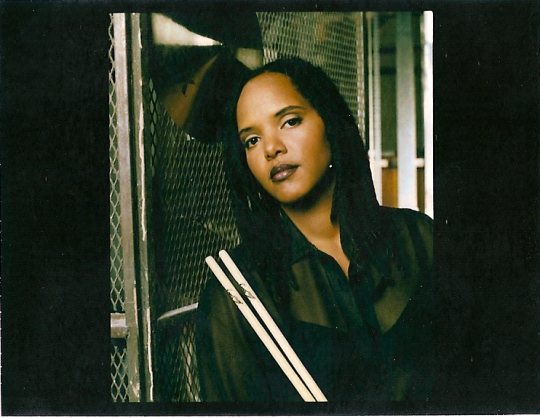
A force to be reckoned with in the world of contemporary jazz, drummer, composer, activist, and educator, Teri Lyne Carrington, in my eyes, is a genuine SUPERHUMAN. She has and continues to breathe new life into the genre and has made significant contributions to expanding what jazz is all about.
As a lifelong musician, Teri Lyne Carrington, started her career as a professionally accounted for jazz artist at the young age of 10 and attended the Berklee College of Music at only 11. Throughout her career, Teri has worked and toured with other big names in jazz such as Cassandra Wilson, Stan Getz, Pharaoh Sanders, Herbie Hancock, and Wayne Shorter, and can also be recognized in other parts of the entertainment industry such as performing on several late night TV shows .
Teri lyne Carrington may also be recognized as the first woman ever to win a Grammy award in the Best Jazz Instrumental Album category. However, she didn't do this just once, but SEVERAL times. She would recieve Grammy's for "The Mosaic Project," "Money Jungle: Provocative in Blue," "Waiting Game," and her most recent album "new STANDARDS vol.1" (LIKE I SAID, A FORCE TO BE RECKONED WITH)
Her artistry is not to be questioned and neither is her character! Teri has made archaic efforts in amplifying the voices of and creating an inclusive, safe, and welcoming space in the jazz world for marginalized groups. LISTEN TO THIS COOL ASS LADY!!!
Melissa Aldana (born December 3, 1988) -

Highly influential and a true master of her craft, Chilean jazz saxophonist, Melissa Aldana, evokes a sort of poetic and soul-touching aura through her playing and does a superb job of not just performing jazz but feeling and speaking jazz.
Melissa got the ball rolling as a professional saxophonist by first playing jazz clubs as a young teen in Santiago, Chile. As she gained traction, she was eventually lead to study at the Berklee College of Music and would then move to New York City post-graduation, and during this time, was under the guidance of other respectable musicians such as Bill Pierce, Greg Osby, and George Coleman.
Outside of her musical education, Melissa Aldana has gone to the lengths of achieving things such as winning Altazor National Arts Award of Chile, being the first female musician, youngest musician, and South American musician to win the Thelonious Monk International Jazz Saxophone Competition, performing in multiple credible jazz festivals around the world, AND has won a Grammy for Best Jazz Performance.
Just like Una Mae Carlisle and Teri Lyne Carrington, Melissa Aldana's work ethic and eagerness to always keep learning and widening her perspectives is more than admirable.
These women make me so excited for the future directions of jazz and the incoming lineage of influential and innovative female jazz performers. As the genre evolves, it is figures like these outstanding women that unfailingly serve as a reminder as to how important women are to the arts and how we will forever stand as symbols of possibility.
Have a beautiful April~
4 notes
·
View notes
Text
189: The Haxan Cloak // Excavation
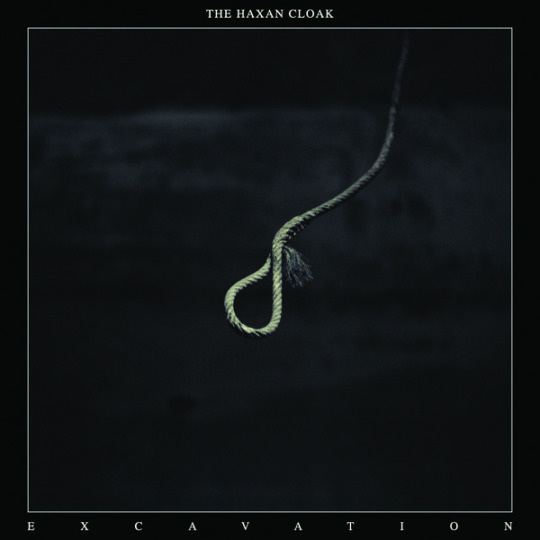
Excavation The Haxan Cloak 2013, Tri Angle (Bandcamp)
Through his work as the Haxan Cloak and as a film composer (notably on a couple of Ari Aster pictures), Bobby Krlic has helped define the modern aesthetics of what we might call Upsetting Music:
Extremely low frequency synthesized bass with a subliminal roar
Slow, deliberate, violent industrial percussion with a ton of reverb
Creepy whirring noises that simultaneously evoke machinery and insects
Staticky, panned whooshing sounds, that suggest rapid movement captured on degraded video tape
Piercing whines, reminiscent of alarms or the shrill violin notes exploited in scores like Psycho
Snippets of higher pitched noises that sound like muffled or glitched recordings of human cries
youtube
Unlike traditional symphonic scores or even the kind of throbbing but ultimately melodic progressive electronic stuff used in ‘80s horror scores, this music largely eschews melody in favour of manipulating sounds to provoke a visceral sense of unease as directly as possible. Electronic music made its initial inroads into horror in the late ‘70s largely because it was cheap to produce, but the runaway success of independent/low-budget films with keyboard-heavy scores like John Carpenter’s Halloween made the aesthetic popular. Since then, genre film has continued to evolve alongside the darker strains of electronic music, from schlocky early ‘90s flicks that incorporate techno and horrorcore rap, to the way industrial became de rigueur for a certain variety of desaturated, nihilistic, almost fetishy brand of cheap ‘00s torture flick.
Independent of this history though, I think there’s something specific about recent horror and thriller filmmakers’ embrace of dark ambient/drone music like Krlic’s that links to Western contemporary anxieties and how these audiences experience fear. I remember many years ago (I’m 51) reading an article in a film theory class about how the rise of automation in the early 20th century kicked off a minor craze in the newspapers of the day for grisly stories about bodies being maimed by trams and the like. The author argued that these sorts of accidents were a new form or vector of terror specific to the industrial age, and that there was a corresponding spike in depictions of these tragedies in contemporaneous films, which tended to pull their subject matter and aesthetics from the well of public worries. Genre music has evolved along parallel lines. Traditional orchestral horror scores derive from ominous motifs found in classical music and opera, which reflect older notions of how evil and despair should be depicted—a Christian understanding of evil, with attendant tropes. A world mediated by religion and versed in devotional music (masses, hymnals, Gregorian chant) would naturally imagine Satanic music as its inversion (dark, baroque renditions of the religious cannon) or opposite (“primitive” tribal music).
By the middle of the century a secularized notion that evil might derive from the personal psychoses of individuals, or (as the tram reading suggested) the indifference of technology and institutions, became widespread, and was duly reflected in the cinema. Today, in the West anyway, our bodies are more insulated than ever before from daily exposure to the sorts of violence depicted in horror films, and our fears have become more secularized and more abstracted still. Our most immediate experiences of dread and bodily harm have tended to come from what we witness on our screens, the fear of seeing something troubling. At the same time, filmmakers have realized that the sonically unsettling aspects of ominous symphonic music (extreme high and low frequencies; disharmony; jerky rhythms) could be divorced from the orchestral context, leaving artists with a set of specific tools for physically startling audiences in tandem with the action onscreen.
Krlic’s music is a product of these parallel processes. As noted, much of his work prioritizes psychological and physiological effect above all, pushing these notions (in his Haxan Cloak work especially) about as far as they can be taken outside of extremist genres like harsh noise and powerviolence. When he makes his synths literally growl, our bodies respond to the perceived threat, even though we know what we’re hearing isn’t produced by a living animal. Some of what he’s exploiting, again, is stuff that goes back to our base threat-detecting instincts, but the overtly technological aspect is also the sound of horrible things both real and simulated we’ve seen through media. Staticky screams and the scrape of metal on concrete summon the spectre of snuff films, hostage videos, extreme BDSM porn, war footage, and all of the movies, video games, and music videos that have adapted their imagery to get a rise out of people. It also, especially to a broad subset of “average” moviegoers, sounds like the type of music people who want to rape and murder your family would listen to for kicks.
youtube
There is a good deal more going on in Krlic’s music than simple fearmongering though—we can look at Excavation, his second and final LP to date as the Haxan Cloak,as part of a long lineage stretching from ‘60s experimental electronic music like White Noise through Nurse with Wound, Aphex Twin, and Nine Inch Nails among many others. “The Mirror Reflecting (Part 2)” eventually reveals a sequence of austere, crystalline guitar-like sounds that post-metallers Agalloch might’ve produced; “Dieu” opens with some subterranean breakbeats and chopped up samples that nearly threaten to look in the direction of a dancefloor before a creepy violin quells the thought; the rain-drenched “The Drop” flashes a bit of a Baths-style emo/downtempo vibe when it isn’t trudging past the sounds of dark satanic mills. Just as some people will hear Excavation as sadistic junkie music, others will no doubt find it an exceedingly warm and plush casket to disappear within, the overwhelming weight of its sounds divorced of violent associations, just signals strobing across the darkened hemispheres.
189/365
#the haxan cloak#bobby krlic#ari aster#a24#horror movies#horror music#halloween music#halloweek#dark techno#dark ambient#electronic music#'10s music#music review#vinyl record
5 notes
·
View notes
Text
Tracing the Lines: The Origin of Fluted Design in Jewelry

There’s something effortlessly regal about fluted jewelry. Whether it’s a ridged gold band or a finely grooved bangle, the design speaks without shouting. It’s timeless, textural, and rich with history but where exactly did the fluted look come from? Let’s take a step back and explore the origins of this enduring design language in the world of jewelry.
From Columns to Craftsmanship
The fluted design we now see in rings, cuffs, and earrings actually began far from a jeweler’s bench in ancient architecture. The iconic fluted columns of Greek and Roman temples inspired a visual language that designers would later echo in metal. These vertical grooves weren't just decorative; they represented balance, proportion, and light play.
Centuries later, jewelers translated those same principles into wearable art. Fluting first appeared in early signet rings and engraved goldwork, often worn by aristocrats and rulers who favored pieces that combined structure with elegance.
A Signature of Elegance
By the early 20th century, fluted motifs were finding their way into luxury jewelry design. French houses, especially Cartier, became known for incorporating finely fluted gold in their pieces think sleek cuffs, cigarette cases, and wedding bands with symmetrical ridges that caught light from every angle.
Cartier’s “Godron” style, characterized by its smooth, parallel grooves, made the fluted look not just decorative, but iconic. It wasn’t loud or flashy, but rather quietly luxurious. That quiet luxury is exactly what has helped fluting stand the test of time.
Fluting Today: Minimalism Meets Movement
Modern jewelers continue to revisit and reimagine the fluted style. Some keep it vintage-inspired, others give it a minimalist twist with chunkier lines or asymmetrical ridges. What remains unchanged is the way fluting adds dimension and depth without relying on stones or heavy detailing.
Fluted rings especially in gold are a favorite for everyday stacks or statement engagement bands. The texture adds movement, catches light beautifully, and gives a tactile richness to even the simplest designs.
Why We Keep Coming Back to It
At its core, fluted jewelry feels familiar and sophisticated. It connects us to something classical while still feeling fresh. For those who gravitate toward detail, craftsmanship, and a story behind the design, fluting offers all of that carved into gold, cast in silver, or molded in platinum.
0 notes
Text
Harmony with Western Music Traditions
Interestingly, the principles that make ambient music effective for studying can be traced back through various movements in Western music. For instance, the minimalist composers of the late 20th century, such as Philip Glass and Steve Reich, utilized repetitive structures and gradual transformations, creating pieces that evoke a sense of calm while engaging the listener's mind. This approach parallels the ethos of ambient music, where the focus is on creating an immersive experience rather than drawing attention to a specific melody or rhythm.
Moreover, the use of drones and soft textures in ambient music can be compared to the tonal landscapes found in orchestral works by composers like Erik Satie, who believed in the power of music to evoke a certain atmosphere. Satie's innovative piano compositions, often imbued with simplicity and elegance, resonate with the tranquil aura of ambient music, demonstrating a long-standing appreciation for soundscapes that soothe rather than stimulate.
When curating a study playlist, consider blending ambient tracks with minimalist and impressionist pieces from Western music. Works like Songs From the Saddle can create a rich auditory experience that promotes focus without overwhelming the senses. Ambient music is more than just a background soundtrack; it’s an essential ingredient in the cocktail of effective study strategies. Its roots in Western music traditions allow it to connect with a rich history of sound and atmosphere that continues to inspire concentration and creativity. So, the next time you sit down to study, consider tuning into some ambient soundscapes—your mind will thank you!
#ambient music#studying#concentration#productivity#Western music#music for studying#soundscapes#creative environment#focus#study playlist#atmospheric music#tranquility#relaxation#acoustic sounds#audio experience#impressionism#music therapy#educational tools#cognitive enhancement#sound therapy#background music#tranquil soundscapes#musical focus#creativity#auditory environment#ambient soundtracks#stress relief#study aids#effective study techniques#immersive music
0 notes
Text
The Korean War: Forgotten Conflict in the Mid-20th Century
The Korean War: Forgotten Conflict in the Mid-20th Century
The Korean War, fought from 1950 to 1953, is often referred to as the "Forgotten War." Despite its significance in modern history, the conflict has been overshadowed by other major events of the 20th century, such as World War II and the Vietnam War. This article will explore the causes, key events, and consequences of the Korean War, highlighting its importance in the context of the Cold War and its lasting impact on international relations.
Causes of the Korean War
The Korean War was sparked by the division of Korea into two separate states after World War II.
Division of Korea: In 1945, the Soviet Union and the United States occupied Korea, dividing it along the 38th parallel. The Soviet Union established a communist government in the north, while the United States supported an anti-communist government in the south.
Rise of Kim Il-sung: Kim Il-sung, a Korean nationalist and communist, emerged as the leader of North Korea and began to consolidate power.
Invasion of South Korea: On June 25, 1950, North Korean forces, backed by China and the Soviet Union, invaded South Korea, sparking the Korean War.
Key Events of the Korean War
The Korean War was marked by several key events, including:
Battle of Inchon: In September 1950, United Nations forces, led by General Douglas MacArthur, launched a surprise attack on Inchon, a strategic port city in South Korea.
Battle of Chosin Reservoir: In November and December 1950, United Nations forces fought a brutal battle against Chinese forces at the Chosin Reservoir, suffering heavy casualties.
Armistice Agreement: On July 27, 1953, an armistice agreement was signed, bringing an end to hostilities and establishing a ceasefire.
Consequences of the Korean War
The Korean War had significant consequences for international relations, global security, and the Cold War.
Establishment of the United Nations: The Korean War marked the first major test of the United Nations, which played a key role in coordinating international response to the conflict.
Escalation of the Cold War: The Korean War contributed to the escalation of the Cold War, as the United States and the Soviet Union engaged in a proxy conflict in Korea.
Impact on International Relations: The Korean War had a lasting impact on international relations, shaping the development of international law, global governance, and security institutions.
Legacy of the Korean War
The Korean War has a complex and multifaceted legacy, with ongoing implications for international relations, global security, and Korean politics.
Korean Peninsula: The Korean War established the Korean Peninsula as a key flashpoint in international relations, with ongoing tensions between North and South Korea.
United States-South Korea Alliance: The Korean War cemented the alliance between the United States and South Korea, which remains a cornerstone of regional security.
Global Security: The Korean War highlighted the importance of collective security and the need for international cooperation to prevent and respond to conflicts.
Conclusion
The Korean War was a pivotal conflict in the mid-20th century, marking a significant escalation of the Cold War and shaping the development of international relations, global security, and Korean politics. Despite its significance, the Korean War remains a relatively forgotten conflict, overshadowed by other major events of the 20th century. However, its legacy continues to have ongoing implications for international relations, global security, and Korean politics, making it an important chapter in modern history.
0 notes
Text
There are many types of watch patterns, and the Geneva pattern is the most common type of decoration
The Geneva wave pattern, which is common in Swiss watch movements, is not only used for decoration, but also has a practical function.
There are many types of watch patterns, and the Geneva pattern is the most common type of decoration, and the well-known Geneva pattern, which seems to be simple in design, has a great deal of learning, and this time we will explore the story behind the Geneva pattern.
The Geneva ripple is inspired by the sparkling waves of the clear waters of Lake Lémans (Lake Geneva) blown by the wind. At the beginning of the 20th century, the design of Geneva patterns spread in Switzerland, not only because of the simplicity of the manufacturing method, but also because of the beauty of the parts. Although the Geneva pattern decoration belongs to the more common pattern decoration on the table, the workmanship is quite detailed. The bridge made of bronze is properly polished and sprayed with sand, and then the surface is golden, and then the surface will show a gray metal texture, and then on the grinding machine moving along the two lines, the fine sand paper is used to polish the swirl sheet, and the unique texture of concentric circles or parallel waves can be polished. The Japanese tile pattern will also show different ripples according to different grinding methods, such as strip waves, ring patterns and radial waves.
The original purpose of the Geneva pattern was to highlight the tiny dust in the air and prevent it from falling on the movement parts and reducing the life of the watch,imitation watch so that the pattern could not be too rough or too smooth.
In Geneva, there is also a legendary story about the Geneva pattern, which is said to be in the middle of the 19th century, when the mainstream pattern of the movement was actually mostly a fish pattern, and then gradually evolved from the fish pattern to the familiar Geneva pattern as time passed. But regardless of the story, the unique character of the Geneva pattern and its long history will continue to live on in history.
0 notes
Text
🥊🎤 Welcome to "The History of Boxing with Hip-Hop Song" 🎤🥊
Step into the ring and experience the powerful fusion of two iconic cultures—boxing and hip-hop—as we take you through a rhythmic journey into the history of one of the world’s oldest and most intense sports. This video combines the raw energy of hip-hop music with the epic legacy of boxing, creating an experience that’s as educational as it is entertaining.
🎶 What to Expect:
This unique hip-hop track tells the incredible story of boxing, highlighting its most defining moments, legendary fighters, and the impact it has had on sports and society. Through beats and bars, we’ll break down the evolution of boxing, from its ancient roots to its modern-day superstars.
Dynamic Hip-Hop Beat: A hard-hitting beat that keeps you engaged as we tell the story of boxing.
Informative Lyrics: Each verse covers key eras of boxing history, from the bare-knuckle brawls of the 18th century to the reign of modern champions.
Tributes to Boxing Legends: Shout-outs to the greatest fighters of all time, including Muhammad Ali, Mike Tyson, Sugar Ray Leonard, Floyd Mayweather, and many more.
🥊 Key Moments Covered:
The Origins of Boxing: Explore the ancient history of boxing, from early civilizations to the establishment of formal rules.
The Golden Age of Boxing: Learn about the rise of iconic fighters, such as Jack Johnson, Joe Louis, and Rocky Marciano, and how they shaped the sport in the 20th century.
The Civil Rights Era: Discover the role boxing played in social justice and how champions like Muhammad Ali used their platform to make a difference.
The Modern Era: From heavyweight champions to modern boxing’s crossover with MMA, we cover how the sport continues to evolve and captivate fans worldwide.
🎤 Hip-Hop and Boxing: A Shared Culture:
Hip-hop and boxing have long been intertwined, both representing strength, resilience, and the fight for respect. From rap anthems blaring during ring entrances to fighters embodying the lyrical flow and energy of MCs, these two worlds have influenced each other for decades.
Rap Icons and Boxing: How hip-hop artists like Tupac, Nas, and Jay-Z have referenced boxing in their music and connected with the culture.
Fighter and MC Parallels: The art of storytelling in rap mirrors the drama and intensity of a boxing match—both filled with strategy, endurance, and the pursuit of victory.
🎶 How This Hip-Hop Song Works:
Listen and Learn: Follow the lyrics as they chronologically take you through the most important eras of boxing history.
Feel the Beat: Let the music elevate the storytelling with punchy rhythms and powerful delivery.
Dive Deeper: Whether you’re a boxing fan or a hip-hop lover, this video will deepen your appreciation for both.
🥊 Why This Video Is Special:
Educational and Entertaining: Learn the history of boxing while vibing to a captivating hip-hop beat.
For Boxing Fans and Hip-Hop Heads Alike: This video celebrates the culture and artistry of both worlds, blending them seamlessly to tell an unforgettable story.
Perfect for All Ages: Whether you’re new to boxing or a seasoned fan, this video makes history come alive in a way that’s fun and accessible.
💥 Fun Ideas While Watching:
Boxing Training: Play this track during your workout or boxing training session for a motivating experience.
Classroom Learning: Teachers and coaches can use this video to introduce students or athletes to the rich history of boxing.
Hip-Hop Playlist Addition: Add this song to your playlist for a unique mix of education and entertainment.
If you enjoyed "The History of Boxing with Hip-Hop Song", don’t forget to like, subscribe, and share with your fellow boxing and hip-hop fans! 🥊🎤
You can find more music videos on the Labe Aabi channel on YouTube 🩵
Sport me music makes by Labe Aabi digital music studio. ©️Labi-LabeAabi2024-2025
Follow me on the YouTube channel;
@ Labe Aabi 🩵
#boxing#boxing history#music producer#new music#music video#hip hop#pop music#pop#rock#pop rock#Labe Aabi#Sport music#sports#muhammad ali#boxing event#Legends of boxing#Songs#new song#my music#original music#music blog#electronic music#music review#music reaction#hip hop music#music charts#music channel
1 note
·
View note